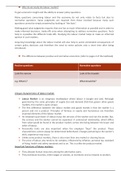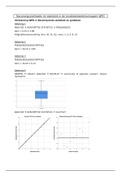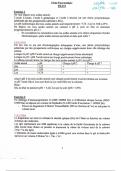Resume
Summary ECS2604 Exam Revision Notes
- Cours
- Établissement
These are important revision summary notes to be studied in conjunction with the other study materials. This will save you much needed time in your studies which you can allocate to other modules. These are the kind of revision materials that helps you finish your degree quicker. It worked for me a...
[Montrer plus]












